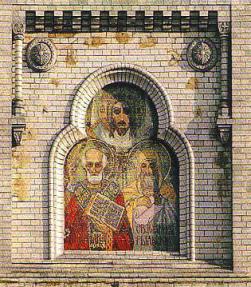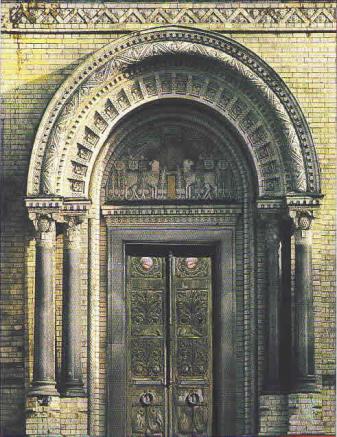Christianity came to the Russians through Kiev, perhaps the oldest city of Europe, ”the mother of all cities“ .
The ”Baptism of the Rus“ , that is the mass conversion to Christianity by the inhabitants of the first Russian empire, the Kievian Rus, is linked to the name of the Kievian Grand Duke Vladimir Svjatoslavjevich, the ”Golden Little Sun“ , and the year 988. All this is more based on myths, or state and clerical propaganda, than on facts.

The rulers of the Rus already for some time tried to determine and unify the beliefs of their subjects in order to create a stable base for an empire. The Kievian Grand Dukes Askold and Dir as early as 866 attacked Constantinople, then agreed on cooperation and somehow were baptized there. They didn’t succeed in introducing this religion at home and were killed by their successor Oleg. Later the Grand Duchess Olga tried to introduce Christian beliefs to the Rus, also in vain. Vladimir first tried to strengthen the old heathen beliefs of the Slavs, had a temple erected for the pagan gods and persecuted the Christians. But then he started to look for allies and stage hearings of representatives of various religions, Jews, Muslims and Christians. Finally he decided to side with Constantinople, took the sister of the emperor as wife and converted to Christianity.
All the allegations that have been made about this conversion have never been proven. Some sources state that he was baptized on Khersones (today Sevastopol) on the Crimea, others state he had himself baptized in Kiev and most of the inhabitants of the city followed him in a kind of mass hysteria down to the river to follow his example, rushing along the street that is today called the Kreshchatik, the Street of Baptism. The only thing that can be said for sure is that this is the version that was promoted by Vladimir himself and his successors. A kind of medieval propaganda.

Perhaps conversion wasn’t so voluntary. Certainly there was resistance in other cities of the Rus, as accepting this conversion meant subjection to Kiev.
Arab sources also mention that later Vladimir converted to Islam – without abandoning Christianity, either. He liked polygamy, had lots of harems and his countless sons took over other cities of the empire, fought against each other and outer enemies till the Mongolian invasion of 1240 that led to the complete destruction of Kiev and the end of the Rus. Then followed the centuries of the Mongolian yoke.